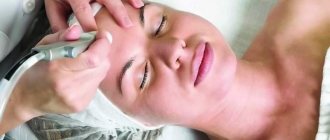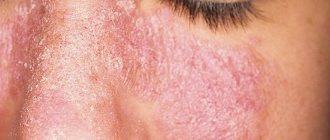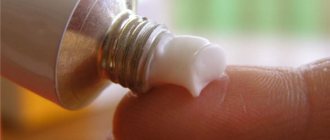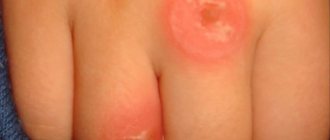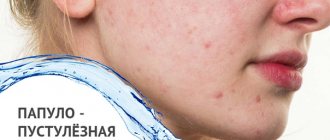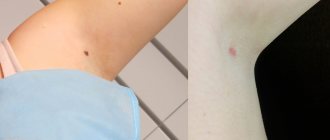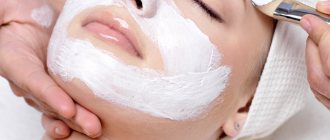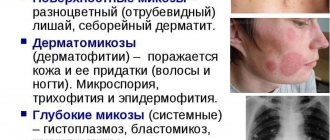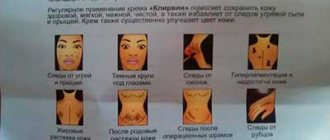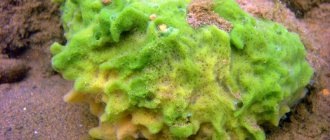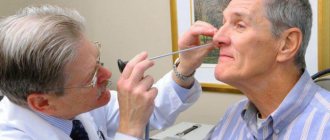Surgery is a huge stress for the body. Postoperative sutures require careful care. Often, scars and scars that remind of it for a long time after surgery are very worrying for patients. Scars cause aesthetic discomfort, especially if they are in a visible place. In order to get rid of them, modern dermatology offers a lot of options for different ointments. This article discusses the properties of some of them.
At-risk groups
Theoretically, seroma can occur after any violation of the integrity of lymph vessels, which do not “know how” to thrombose quickly, as blood vessels do. While they are healing, lymph continues to move through them for some time, flowing from the rupture sites into the resulting cavity. According to the ICD 10 classification system, seroma of the postoperative suture does not have a separate code. It is assigned depending on the type of operation performed and the reason that influenced the development of this complication.
In practice, it most often occurs after such cardinal surgical interventions:
- abdominal plastic surgery;
- cesarean section (this postoperative suture seroma has ICD 10 code “O 86.0”, which means suppuration of the postoperative wound and/or infiltration in its area);
- mastectomy.
As you can see, it is mainly women who are at risk, and those who have solid subcutaneous fat deposits. Why is that? Because these deposits, when their integral structure is damaged, tend to peel off from the muscle layer. As a result, subcutaneous cavities are formed, in which fluid begins to collect from the lymph vessels torn during the operation.
The following patients are also at risk:
- those suffering from diabetes;
- elderly people (especially overweight);
- hypertensive patients.
Causes of seroma
The accumulation of serous fluid in the area where the surgical suture is located is caused by the presence of a wide variety of factors that took place at the time of surgery.
The main causes of seroma development are:
- Excessive activity of lymphatic capillaries. Even an operation that does not pose a threat to health is always local stress for the body and skin that has been injured by a mechanical cut. Under such conditions, lymphatic capillaries begin to actively synthesize lymph and redirect it to the surgical site. As a result of an abnormal reaction of the lymphatic system, the patient faces very unpleasant consequences.
- Inflammatory process. Each body reacts differently to surgery. Some people's skin and soft tissues recover quickly and without complications, while there are patients who develop non-infectious inflammation of the wound surface with excessive accumulation of lymphatic fluid.
- Hypertonic disease. High blood pressure can be a factor in the irrational distribution of lymph to all parts of the body.
- Overweight. At least 75% of all surgical patients who are overweight face the problem of postoperative suture healing and the accumulation of serous fluid. The presence of a large amount of fatty tissue contributes to this. Patients who have elastic muscles in the abdominal area almost never encounter the problem of seroma.
- Diabetes. This is a concomitant disease that is characterized by increased concentrations of glucose in the blood. Excess sugar does not allow blood vessels and the circulatory system as a whole to function normally and restore damaged tissue.
- Senile age. As you age, the intensity of metabolic processes in the body decreases. The division of epidermal cells, blood, soft tissues and the formation of lymph slows down. Therefore, deviations in the recovery process and the formation of serous fluid at the incision sites are possible.
Most of these potential causes that can cause postoperative complications are identified by doctors several days before surgery. The patient takes a blood test to check blood sugar levels, coagulability, and the presence of chronic diseases of infectious origin. A comprehensive examination of the body, all its organs and systems is also carried out. Therefore, if some pathology has been established, the patient is immediately prescribed specific treatment after the operation in order to prevent the development of seroma. For example, in a patient with diabetes mellitus, during the recovery period, insulin administration is increased to the maximum limit in order to lower the level of glucose concentration in the blood as much as possible and prevent tissue necrosis around the suture, as often happens in patients with this endocrine disease.
Possible complications
If doctors' recommendations are ignored, pathological complications may develop. A cavity filled with serous fluid is an ideal place in which pathogenic bacteria develop. Infections can easily arise from chronic inflammation in the oral cavity and nasopharynx. Exudate due to the influence of pathogenic bacteria turns into pus.
Seroma provokes intensive growth of connective tissue at the surgical site. With various types of implantation, the formation of capsular contracture is possible. Gradually the implant becomes deformed.
Prolonged inactivity has a negative impact on human health. The formation of a serous fistula in the location of a subcutaneous pocket with exudate increases the risk of secondary infection. A fistula can only be removed by surgery.
Symptoms of seroma
Seroma can be suspected if the following symptoms are present:
- The patient feels as if fluid is beginning to overflow in the lower abdomen.
- Sometimes there is swelling and a feeling of bulging in the lower abdomen. Patients claim that their abdomen has suddenly increased in volume, although this was not the case a few days ago.
If the serous fluid has reached large volumes , then the following symptoms occur:
- Soreness or a feeling of tension in the area where the seroma has accumulated. Most often this is the lower abdomen.
- Nagging pain that begins to intensify if the patient gets to his feet.
- Redness of the skin in the place where the seroma has accumulated the most.
- General weakness, increased body temperature up to 37 degrees, fatigue.
Instructions for use Contractubex
Unfortunately, a situation can happen to any person when he has to be treated for a serious injury, which is sure to leave a mark on the skin. Many people after this cannot come to their senses for years, they develop complexes, and later depression may appear against their background. Fortunately, nowadays there are quite a few different ointments that help get rid of scars. You can buy them at the pharmacy, they are available to anyone.
One of the most effective drugs for healing scars and scars is Contractubex. Nowadays it can be purchased in many pharmacies, the ointment is very popular due to its effectiveness. With proper use and strict adherence to the instructions for use of Contractubex, you can get rid of even old scars forever. The drug is very popular among women who want to get rid of stretch marks or simply improve the appearance of their skin. Sometimes using this ointment can really replace a trip to a cosmetologist.
The principle of operation of the product is that the substances it contains trigger skin regeneration processes, as a result of which the skin is quickly restored and renewed.
Instructions
The product is intended for external use only. Apply a small amount of ointment to the problem area (for example, a scar) and rub in with smooth movements until the ointment is completely absorbed. Before applying the ointment, you can steam the scar, this way you can improve the effect of skin regeneration. Use the product 3 times a day. You can make dressings with Contractubex, but you need to change them every 6-8 hours. Areas of skin that have been exposed to the ointment should be protected from sunlight and hypothermia.
Scars that have formed a long time ago need to be treated for 4-6 months. New scars may go away in 1-2 weeks.
Diagnosis of seroma
Diagnosis of seroma is based on examination and instrumental research methods.
- Inspection. During the examination, the surgeon will notice the presence of swelling in the lower abdomen. On palpation, fluid flows from one side to the other, a fluctuation indicating that there is an accumulation of fluid. In addition, the presence of seroma symptoms will leave no doubt for making the correct diagnosis.
- Instrumental research methods - ultrasound of the soft tissues of the abdomen. With ultrasound, the accumulation of fluid between the muscles of the anterior abdominal wall and subcutaneous fat is very clearly visible. Taking into account all the symptoms and ultrasound scan results, it does not seem difficult to diagnose seroma.
Treatment of postoperative seroma
In most postoperative cases, seroma resolves within a few days. Throughout this period, the patient is observed by the surgeon and follows his recommendations for restoring the body. If fluid does accumulate and there is a risk of infection or blood infection, treatment will be needed.
Seroma is treated in two ways:
- surgical,
- medicinal.
Surgical method
It is considered the easiest way to remove seroma. It is carried out using a puncture. A positive result occurs in 90% of treatment.
The surgeon pumps out liquid in a volume of up to 600 ml with a syringe. The procedure is carried out regularly every 3 days. Usually the course is 3-7 punctures.
Complex serous manifestations require 15 procedures. With each subsequent procedure, the fluid decreases. If the patient has thick subcutaneous fat, tissue trauma occurs in a large volume.
With such indicators, it will not be possible to solve the problem with a puncture. You will need to install drainage with active aspiration.
Drainage will allow the fluid to drain continuously until it disappears completely. To install the drainage system, it is soaked in antiseptic.
After connection, it is fixed with additional stitches followed by regular processing. The drainage area itself is covered with a bandage and replaced daily. In this case, after natural outflow, the cavity grows together and the seroma disappears. Drainage is carried out in conjunction with drug treatment.
Drug treatment of seroma
It consists of using:
- broad-spectrum antibiotics for prophylactic purposes;
- non-steroidal anti-inflammatory drugs for the treatment of aseptic inflammation;
- anti-inflammatory steroid drugs in rare cases. These include diprospan and kenalog to block aseptic inflammation.
Removal of serous fluid
Seroma is treated with medication and surgery. The removal of excess serous fluid from the body after surgery is facilitated by therapy with antimicrobial and anti-inflammatory drugs. The doctor prescribes the patient to use:
- antibiotics;
- nonsteroidal anti-inflammatory drugs that help reduce the amount of transudate in the body;
- kenagol and diprospan - in some cases, the doctor prescribes the use of steroid drugs to quickly complete the inflammatory process.
At the same time, physiotherapeutic procedures may be prescribed. The patient must independently treat the sutures with antiseptic drugs. The rapid removal of serous fluid after surgery is facilitated by the use of Vishnevsky and Levomekol ointments. The drugs are used 3 times a day by carefully applying to the surgical area.
The inadequacy of drug treatment for seroma requires surgical removal of the fluid by vacuum aspiration. This manipulation is performed in most cases of excess moisture and allows you to remove seromas with a volume of up to 600 ml. Vacuum aspiration involves inserting a thin tube into the lower area of the wound, through which the device pumps out the seroma. To completely eliminate the pathology, it is necessary to carry out the procedure every 2-3 days.
To collect more serous fluid, drainage with active aspiration is used. The manipulation consists of inserting tubes through a wound or special punctures into a cavity filled with moisture. The patient should lie down for a while so that the excess fluid gradually comes out. It is necessary to ensure constant monitoring of the progress of drainage of the cavity, and regularly carry out antiseptic treatment of surfaces close to the puncture sites.
Folk remedies
It is important to know that regardless of the reasons for the seroma of the postoperative suture, this complication is not treated with folk remedies. But at home, you can perform a number of actions that promote healing of the suture and prevent suppuration.
These include:
- lubricating the seam with antiseptic agents that do not contain alcohol (“Fukorcin”, “Betadine”);
- application of ointments (Levosin, Vulnuzan, Kontraktubeks and others);
- inclusion of vitamins in the diet.
If suppuration appears in the suture area, you need to treat it with antiseptic and alcohol-containing agents, for example, iodine. In addition, in these cases, antibiotics and anti-inflammatory drugs are prescribed. In order to speed up the healing of stitches, traditional medicine recommends making compresses with an alcohol tincture of larkspur. Only the roots of this herb are suitable for its preparation. They are washed well from the soil, crushed in a meat grinder, put in a jar and filled with vodka. The tincture is ready for use after 15 days. For a compress, you need to dilute it with water 1:1 so that the skin does not get burned. There are many folk remedies for healing wounds and scars after surgery. Among them are sea buckthorn oil, rosehip oil, mumiyo, beeswax, melted with olive oil. These products should be applied to gauze and applied to the scar or seam.
Instructions for tetracycline ointment
Today, every second person suffers from one or another dermatological problem. Mostly, the causes of skin diseases are poor ecology and failure to comply with personal hygiene rules, but sometimes the causative agents of skin infections are to blame.
Tetracycline ointment is a modern effective remedy for combating dermatological problems caused by staphylococcus, fungal or viral pathogens. The product is used to treat acne, herpes, boils, and eczema. In ophthalmology, the ointment is widely used to treat trachoma, barley, acne affecting the mucous membrane of the eyes, conjunctivitis, and so on. It is strictly prohibited to use the product without consulting a doctor; the instructions for tetracycline ointment must be strictly followed, as side effects are possible. In case of acne, the ointment should be applied pointwise to problem areas using a cotton swab. It should be used 2 times a day. If the patient suffers, for example, from conjunctivitis, then you should take a small amount of ointment on a cotton swab and place it under the eyelid. From the outside, you need to carefully treat the eyelid with ointment.
The ointment is also used to treat extensive trophic ulcers. In this case, you need to prepare gauze bandages soaked in ointment. They should be changed at least 2-3 times a day.
Postoperative suture seroma after cesarean section
Complications in women whose obstetrics were performed by caesarean section are common. One of the reasons for this phenomenon is the mother’s body, weakened by pregnancy, which is unable to ensure rapid regeneration of damaged tissues.
In addition to seroma, a ligature fistula or keloid scar may occur, and in the worst case scenario, suppuration of the suture or sepsis. Seroma in women giving birth after a cesarean section is characterized by the fact that a small dense ball with exudate (lymph) inside appears on the suture. The reason for this is damaged blood vessels at the site of the incision. As a rule, it does not cause concern. Seroma of postoperative suture after cesarean does not require treatment. The only thing a woman can do at home is to treat the scar with rosehip or sea buckthorn oil to speed up its healing.
Seroma formation after mastectomy and abdominoplasty
As mentioned earlier, seroma can occur after plastic surgery, but the most common are mastectomy and abdominoplasty. The formation of serous fluid occurs in almost 15% of all cases of mastectomy, and this is a fairly high chance of complications. Naturally, breast surgery leads to the most common factor in the accumulation of serous fluid, namely the spread of lymph nodes and their number in this area of the body. During breast surgery, a large dissection of the skin occurs, which affects not only a large number of blood vessels, but also lymph nodes.
As a result, already at the healing stage, due to the occurrence of an inflammatory reaction, serous fluid appears under the skin. Before performing a mastectomy, doctors warn their patients about the possibility of seroma. When undergoing abdominoplasty, the chances of fluid accumulation under the skin increase even more, because here seroma appears in almost half of the cases of plastic surgery.
In fact, the reason is identical, because when cutting the skin on the abdomen, doctors touch a large number of blood vessels and lymph nodes, which, of course, lead to further inflammatory processes.
After treatment
Prevention of seroma
It is always better to prevent complications from developing.
To prevent the formation of subcutaneous fluid, it is enough to follow the recommendations of surgeons:
- Immediately after the operation, a load of up to 1 kg is placed on the suture . Salt or sand can be used as cargo.
- In the first three days, traditional surgical drainage is installed.
- You should take antibacterial drugs .
- Do not perform abdominoplasty if there is a thick layer of subcutaneous fat with an index of more than 5 cm. If it is more than 5 cm, then liposuction should be performed first.
- Point effect on soft tissues . Electrocoagulation should be applied in isolation, only to bleeding vessels. Do not put pressure on soft tissues or stretch them.
- Use high-quality compression garments . This creates good compression and fixation, which prevents displacement of the skin-fat area.
- Physical rest for 3 weeks.
If recommendations and preventive measures are followed, the probability of fluid formation is 10%. Even if it appears, treatment of seroma after surgery is easy and quick.
Consequences
Suppuration . Bacteria multiply very quickly in the serous fluid and the risk of suppuration is very high. Any infection - sinusitis, tonsillitis - can cause wound infection, as it spreads through the lymph and blood.
Mucosal formation . Appears during a long course of the disease, if the seroma does not go away after surgery. It is formed both on the skin-fat flap and on the abdominal wall. If the formation of a seroma is not recognized in time, an isolated cavity with fluid will appear.
This long-term condition makes the skin mobile relative to the peritoneum. Such a seroma can exist for a very long time until events occur that provoke the manifestation of this formation.
Symptoms can often include an enlarged belly. If you start this process, suppuration will begin. The only way to get rid of such a cavity is through surgery.
If the seroma is not diagnosed for a very long time and the seroma of the postoperative suture is not treated in a timely manner, this can lead to deformation of the skin-fat area and thinning of the fiber, which will affect the appearance of the skin.
The invention relates to medicine, in particular to surgery, and can be used for the treatment of seromas in the postoperative period in patients with ventral hernias.
Seroma is one of the most common early postoperative complications during hernia repair. The substrate for this pathology is the accumulation of serous fluid in the area of the surgical wound. Recently, due to the popularization of tension-free hernioplasty methods and the use of synthetic mesh prostheses, the number of early postoperative complications has increased markedly and, according to some authors, reaches 40%. In turn, all complications require treatment, which prolongs the patient’s hospital stay and rehabilitation period, and also worsens the results of surgical treatment of patients with ventral hernias.
There are many ways to treat this complication, ranging from the elimination of the wound cavity in the area of surgical intervention and ending with the introduction of various substances into the cavity of an already formed seroma. None of the currently existing methods, in our opinion, is sufficiently effective.
There is a known method of stopping seroma through puncture. This is a regular syringe with a needle. The disadvantage of this method is its often low efficiency, which forces one to resort to repeated puncture or drainage of the cavity. (V.N. Egiev, “Hernias” Moscow, Medpraktika, 2020, p. 38-40).
There are various types of tubular drainages that are installed at the bottom of the wound. The disadvantage of this method is that when the tube is in the wound, infection of the wound discharge with subsequent suppuration is possible; in addition, the drainage tube, being a foreign body, contributes to the exudation of wound fluid. (V.N. Egiev, “Hernias”. Moscow, Medpraktika, 2020, p. 41-43).
One of the significant drawbacks of most methods of treating postoperative seromas used today is the lack of consideration of the physiological and humoral aspects of the condition of the postoperative wound. When dissecting and separating subcutaneous fat, as well as during its coagulation for the purpose of hemostasis, an extensive wound surface appears, which begins to produce a large amount of exudate. As a result, early retention complications develop. All this leads to prolonged wound healing and an increased risk of infection and worse results of surgical treatment.
The closest method of treating seromas is the method of Seredin Sergei Aleksandrovich patent No. 2360618 which consists of the following: a method of treating seromas, including the evacuation of serous fluid, characterized in that in the case of determining the concentration of microbial bodies in the serous fluid to critical values of 105-106 CFU to the serous fluid a single, maximum permissible dose of a broad-spectrum antibiotic is added, dissolved in a sterile vessel and injected into the seroma cavity.
However, this method has its drawbacks:
- the need for bacteriological examination of the fluid obtained through puncture;
-broad-spectrum antibiotics do not prevent tissue exudation in the wound;
- repeated traumatization of tissues with a puncture needle supports the inflammatory process;
-dead microbial bodies can affect the wound surface with endotoxins and increase exudation.
The proposed invention is aimed at improving the results of treatment of seromas in the postoperative period in patients with ventral hernias.
The specified technical result is achieved in the invention by the fact that the puncture needle is not removed and 1 ml of diprospan is injected into the seroma cavity once, and an aseptic bandage is applied to the wound.
Due to the fact that patients with ventral hernias undergo mobilization of subcutaneous fat in preparation for hernioplasty, an extensive wound surface is formed, which actively produces serous exudate. When using tension-free methods of hernioplasty, the above factor is supplemented by the exudative response of the body to the mesh explant. In the postoperative period, if signs of seroma are detected in the patient (swelling, fluctuation, discharge of serous discharge), a sterile syringe is used to puncture the seroma cavity, evacuate the serous fluid, the puncture needle is not removed and 1 ml of diprospan is injected into the seroma cavity once, then applied to the wound aseptic dressing.
The drug Diprospan belongs to the group of glucocorticosteroids. Has a pronounced anti-inflammatory effect. It has an inhibitory effect on the release of interleukins 2 and 1, macrophages and interferon gamma from lymphocytes, as well as inflammatory mediators from eosinophils. Induces the formation of lipocortins, reduces the metabolism of arachidonic acid. Considering that during alloplasty of hernia defects with synthetic mesh explants, active exudative inflammation occurs due to tissue trauma and implantation of a foreign body into the wound, this drug creates the prerequisites for reducing the severity of local inflammatory reactions. Thus accelerating regenerative processes in the wound and reducing the incidence of wound complications. The active ingredients of this drug: betamethasone disodium phosphate (2 mg) and betamethasone dipropionate (5 mg). For 1 ml of solution 2 and 5 mg, respectively. Betamethasone sodium phosphate undergoes rapid hydrolysis and is immediately absorbed, which provides a rapid therapeutic effect. Betamethasone dipropionate is slowly absorbed and metabolized gradually, which results in a long-lasting effect of the drug for more than 10 days, which is sufficient to relieve severe postoperative inflammatory reactions in the wound and speed up its healing.
This method of treating seromas, in addition to stopping active exudative processes in a postoperative wound, provides a general anti-inflammatory effect.
The proposed method was successfully tested in the surgical department of the National Health Institution Departmental Hospital at the station. Astrakhan-1 JSC Russian Railways in 14 patients. Below are the test results.
Example No. 1
Patient G., 48 years old, was admitted to the Departmental Hospital at the station. Astrakhan-1 JSC Russian Railways with a diagnosis of postoperative ventral hernia.
November 23, 2017 - under endotracheal anesthesia, hernia repair was performed with polypropylene mesh using the “onlay” method. On the 2nd day after surgery, the patient is clinically diagnosed with seroma of the postoperative wound. A puncture of the seroma cavity was performed with a sterile syringe, 7 ml of serous fluid was evacuated, then, without removing the puncture needle, 1 ml of diprospan was injected into the seroma cavity once. An aseptic dressing is applied.
There was no evidence of seroma recurrence in the postoperative period. The patient was discharged on the 9th day.
Example No. 2
Patient L., 54 years old, was admitted to the Departmental Hospital at the station. Astrakhan-1 JSC Russian Railways with a diagnosis of postoperative ventral hernia.
November 29, 2017 - under endotracheal anesthesia, hernia repair was performed with polypropylene mesh using the “inlay” technique. On the 3rd day after surgery, the patient is clinically diagnosed with seroma of the postoperative wound. A puncture of the seroma cavity was performed with a sterile syringe, 5 ml of serous fluid was evacuated, then, without removing the puncture needle, 1 ml of diprospan was injected into the seroma cavity once. An aseptic dressing is applied.
There was no evidence of seroma recurrence in the postoperative period. The patient was discharged on the 8th day.
The proposed method achieves improved results of surgical treatment of ventral hernias, namely:
-reducing the number of relapses of retention complications;
— reduction in the frequency of infectious complications;
— acceleration of regenerative processes in the wound;
— improving the quality of life of patients in the postoperative period; These features of the method are conditions that improve both the processes of tissue regeneration in the field of plastic surgery and the results of surgical treatment in general, helping to reduce the risk of postoperative complications and improve the quality of life of patients.
The developed method can be widely used in the practical work of surgical departments.
A method for treating seromas in the postoperative period in patients with ventral hernias, including puncture of the seroma cavity with a sterile syringe, evacuation of serous fluid, characterized in that the puncture needle is not removed and 1 ml of diprospan is injected into the seroma cavity once, and an aseptic bandage is applied to the wound.

